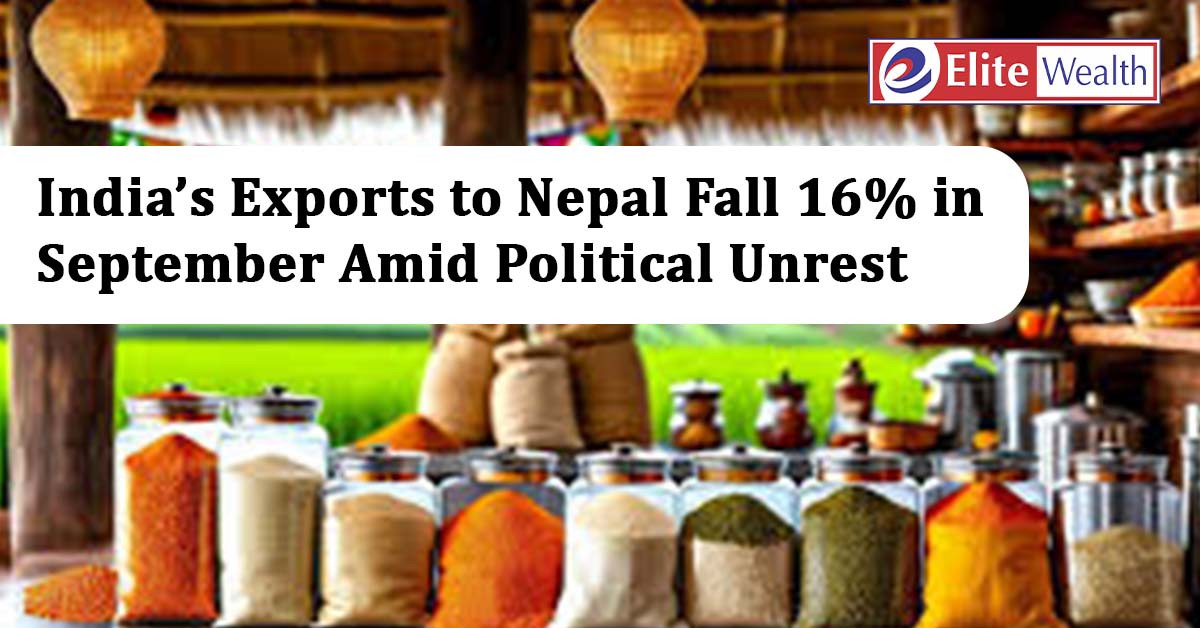
India’s exports to Nepal saw a sharp decline in September, dropping 16.6% year-on-year to $516.62 million, as political turmoil and youth-led protests disrupted trade routes in the Himalayan nation. The decline reversed recent gains and highlighted the vulnerability of India’s overland trade corridors. In contrast, exports to countries such as Spain, China, and Brazil continued to surge, reflecting India’s ongoing efforts to diversify its global trade base.
Reasons Behind the Decline
The slump in exports to Nepal was primarily driven by political unrest in Kathmandu, which affected logistics and cross-border movement. Key export categories impacted included:
- Petroleum products
- Steel and industrial inputs
- Pharmaceuticals and food items
- Plastic raw materials
- Two- and three-wheelers
- Machinery and engineering goods
Road transport, the main channel for India-Nepal trade, faced obstructions for several days due to violent demonstrations and administrative changes. The resignation of Prime Minister K.P. Sharma Oli and Home Minister Ramesh Lekhak, followed by the appointment of former jurist Sushila Karki as Nepal’s new prime minister, extended trade disruptions through September.
Bilateral Trade Snapshot
Despite the September setback, India remains Nepal’s largest trading partner, maintaining a significant trade surplus:
- April–September 2025 exports: $3.66 billion (up 1.9% YoY)
- FY25 exports: $7.32 billion; imports: $1.2 billion
- FY24 exports: $7 billion; imports: $831 million
Petroleum and industrial inputs dominate India’s exports to Nepal, making shipments particularly sensitive to political and logistical disruptions.
Exports to Other Markets Surge
While Nepal-bound shipments slowed, India recorded robust export growth elsewhere:
- Spain: Up 150.8% to $987.7 million, driven by petroleum, textiles, iron & steel, and telecom instruments.
- China: Up 34.2% to nearly $1.5 billion, led by ores, chemicals, and intermediate goods.
- Brazil: Up 25.8% to $749.9 million, supported by engineering goods and agricultural exports.
Overall, India’s merchandise exports rose 6.7% YoY to $36.38 billion in September, despite a 12% drop in shipments to the United States.
Trade Deficit Widens
The trade deficit widened to a 13-month high of $32.15 billion, compared with $26.49 billion in August, due to a 11% month-on-month rise in imports to $68.53 billion, driven by higher global prices for gold, silver, and energy commodities.
The wider deficit underscores persistent external pressures amid elevated commodity prices and strong domestic demand ahead of the festive season.
This snapshot reflects the challenges and resilience of India’s trade landscape: political disruptions in neighboring countries can sharply impact specific corridors, while diversified global exports continue to sustain overall growth.
Disclaimer:
This article is intended solely for educational and informational purposes. The securities or companies mentioned are provided as examples and should not be considered as recommendations. Nothing contained herein constitutes personal financial advice or investment recommendations. Readers are advised to conduct their own research and consult a qualified financial advisor before making any investment decisions.
Investments in securities markets are subject to market risks. Please read all related documents carefully before investing.
